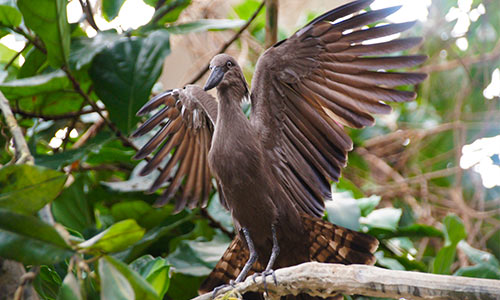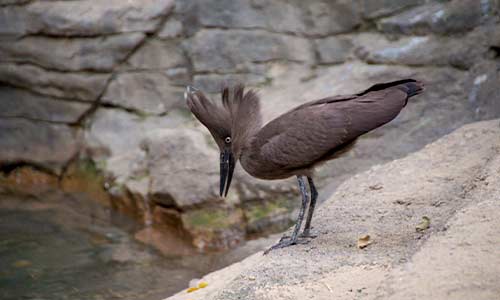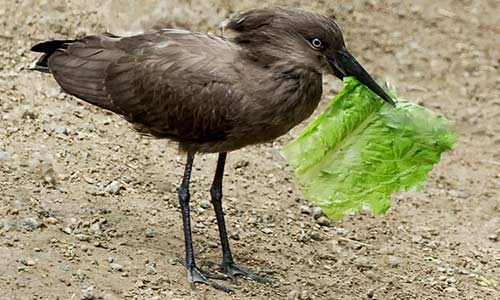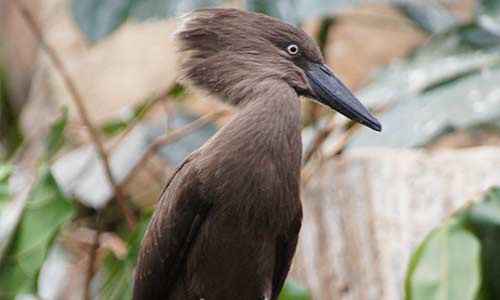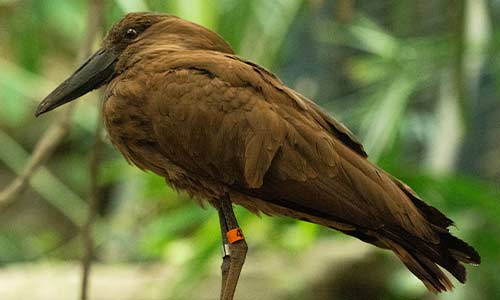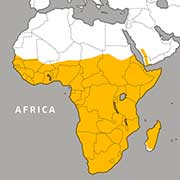Appearance:
The hamerkop is a medium-sized water bird with brown coloring. It has a long, thick, sharp beak (used for spearing prey) and partially webbed feet. The hamerkop's large wings are used to glide and soar.
Size:
- Length: Up to 20 inches
- Weight: One pound
- Wingspan: Up to eight feet
Diet:
Hamerkops are carnivorous, eating tadpoles, frogs, fish shrimp, insects and small mammals.
Mating/Reproduction:
This species breeds year-round in some areas or in the dry season in others, depending on the local climate. Up to 10 hamerkops perform a mating dance, during which the birds hop around, display their crests, and perform false mounts. These birds are typically found in mated pairs. Though pairs stay together for life, they build a new nest every year. They even build multiple nests each year before settling on one.
Both the male and female hamerkop aid in building a nest that can reach six feet tall, weigh 150 pounds and take four months to complete. The female lays three to seven eggs that are incubated by both parents over the course of 30 days. Hatchlings leave the nest 50 days later.
Median Life Expectancy:
Males:12.3 years
Females: 5.9 years
Habitat/Range:
The hamerkop is found throughout sub-Saharan Africa in forests, wetlands and the savannah.

